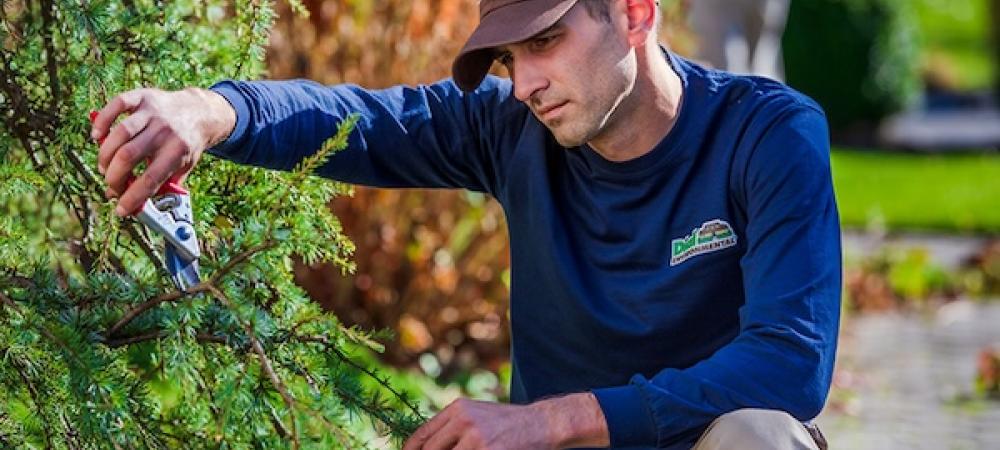Dormant Pruning: What Is It and Why Is It Important?

Dormant pruning is the process of pruning back your shrubs and trees while they’re dormant – no longer growing or flowering – to aid their growth in the spring and keep them looking their best. This routine maintenance is one to consider keeping up with each winter, as it is crucial to the health of your plants through all seasons. It can also keep your landscaping looking well-maintained throughout the cold winter months.
Why Is Dormant Pruning Important?
Dormant pruning offers several benefits for homeowners who have trees and shrubs on their property. Pruning trees and shrubs during the colder months helps keep them in their best shape for springtime.
One of the most significant benefits of dormant pruning is ridding your trees and shrubs of damaged limbs. With damaged areas remeoved, your plants will be ready to grow healthy new limbs in the spring. For plants that flower or produce fruit, dormant pruning can also encourage a fuller, healthier production when it’s time for them to grow.
Dormant pruning can also reduce the size of your overgrown trees and shrubs during a time that will be the least stressful on them. Pruning during their regular growth season can increase stress on your plants and inhibit new growth.
You may also consider dormant pruning to let the sunshine in. If your trees are beginning to block sunlight from reaching your home, the dormant season can be an excellent time to trim them. Natural light can save on heating costs by making your home warmer.
When Is the Best Time for Dormant Pruning?
In the New Jersey area, late fall and winter – November through mid-March – is when many trees and shrubs are dormant. This is the best time to take care of pruning to encourage better flowering in the spring and get rid of dead, damaged, or unhealthy branches that could pose a hazard during periods of heavy snow and ice in the winter.
During the dormant season, you’ll give your trees and shrubs a better chance to heal and get ready to grow during their active growing season.
What Else Can I Do to Protect My Trees and Shrubs?
Now is also an ideal time to protect your shrubs and trees against the harsh winter weather. The leading cause of winter injury to trees and shrubs is desiccation, or drying out of the plant.
This happens when the ground freezes, and the plant’s roots can no longer take water from the soil. Instead, they need to tap into the extra water reserved in their leaves, needles, or stems, which, over time, dries the plant tissue and causes the plant to become brittle.
Plants can also lose water through transpiration, or the evaporation of water from the plant’s surface, which can speed the drying process. Transpiration causes further damage to your plants, which can make their spring growth less prominent and healthy.
Protecting your trees and shrubs before winter is crucial to keeping them strong and healthy for spring. An anti-desiccant treatment can help. The process applies a protective coating to your plants to reduce water loss through their leaf or needle surfaces. The coating is safe for plants, dries clear, and will break down naturally in the spring to allow for new plant growth.
If you’re ready to get your trees and shrubs ready for the winter, the licensed and certified arborists at Dial Environmental can help. We specialize in pruning, winter protection treatments, and pest prevention to keep your landscaping looking its best.
Certified Arborists will provide an evaluation of your trees and shrubs to determine what pruning process is best for your landscape. We’ll also provide a detailed estimate for each landscape we recommend for pruning. Contact us today to learn more about our services or set up your estimate.
